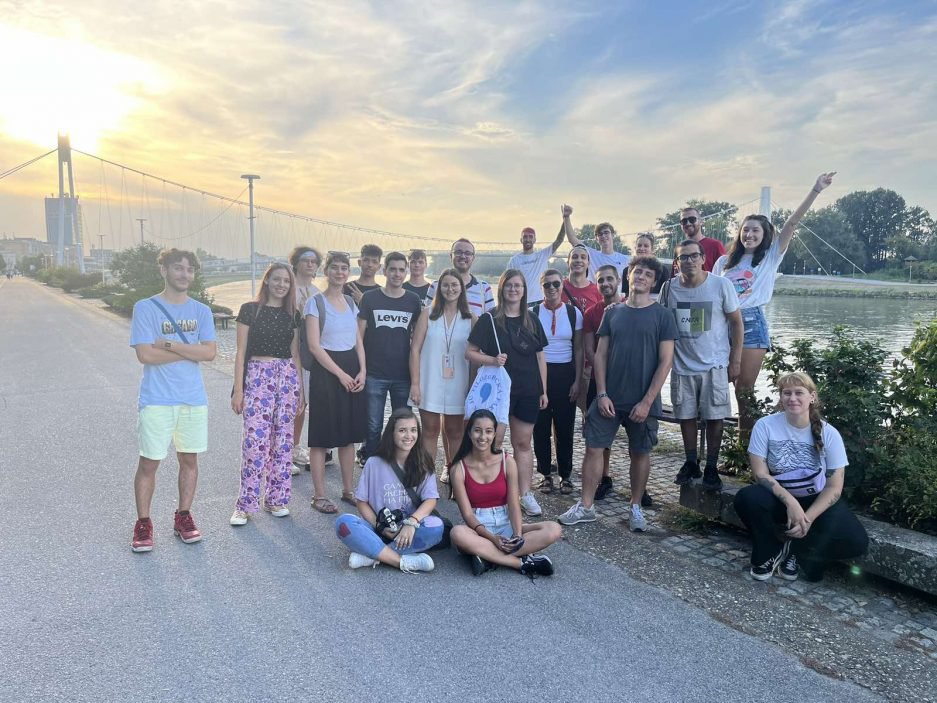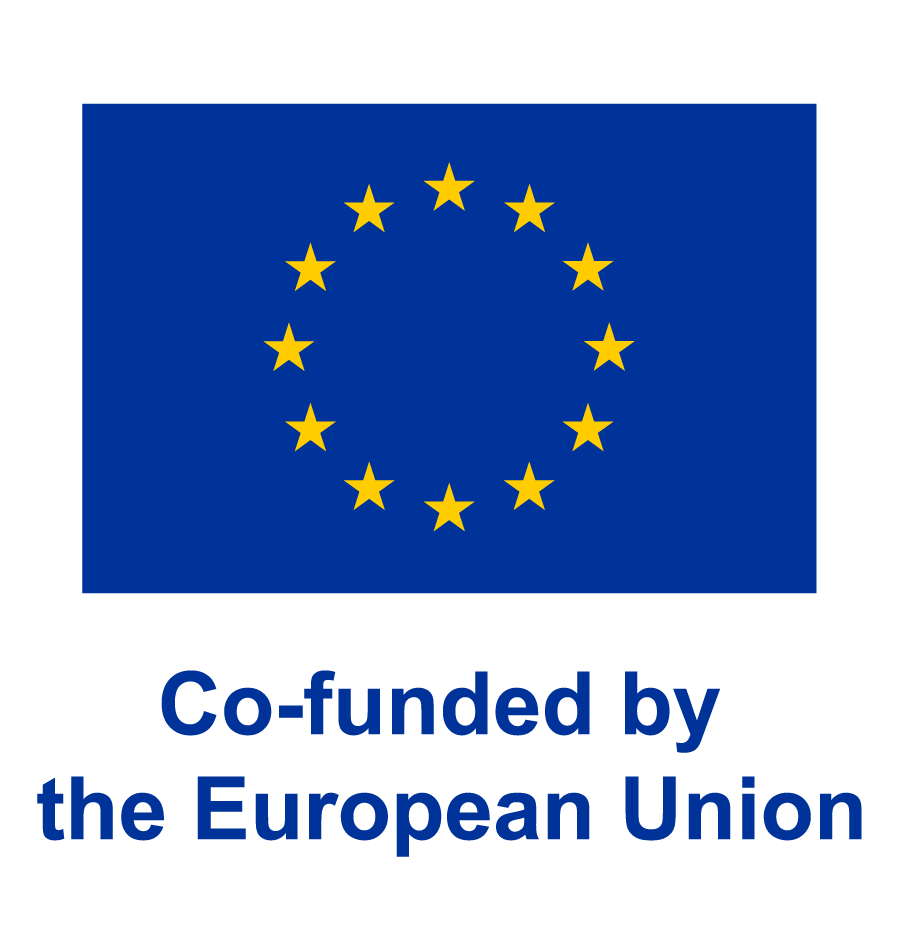Economy and ecology, violence and women’s rights: differences and commonalities between European experiences of transitions

We met Rebekah Manlove through our project “Female perspectives on the democratic transitions of the 1970s, 1980s, and 1990s”. Through the project Documenta and its partners are exploring several different contexts of transitions to (more) democracy: the transition from socialism to democracy in Bulgaria, the violent dissolution of Yugoslavia and democratic transition in Croatia and Slovenia, the non-institutional democratization in Italy in the 1970s, marked by the „strategy of tension“, and the Spanish transition to democracy from the regime of Francisco Franco after his death in 1975.
Rebekah wrote the following text in which she reflects on various European experiences of transition and her experience as a participant in the project.
Thanks to the Documenta project “Female perspectives on the democratic transitions of the 1970s, 1980s, and 1990s” I got the chance to learn more about how people from a variety of post-socialist countries, mainly southeast European countries like Bulgaria, Croatia, and Romania, perceive their past and present and contrast this with the experiences of people from southwestern Europe, namely Spain and Italy. Each society had its own paths from the past to the present and a variety of challenges, especially regarding women’s rights. I could then compare this with my own experiences and education as a German born in the late 1990s, who spent most of her life in a major city on the territory of the former German Democratic Republic.
I participated in two seminars held during the project: one in September 2023, which took place in the Croatian towns of Osijek and Pakrac, and another one in May 2024 in Sofia. The first training was focussed on the Croatian history of the 1990s. The second project was broader with an emphasis on Bulgaria’s socialist past but also included sessions on the transitional history of Spain, Italy, and Croatia. Some participants originated from Russia, Romania, and Germany, so during our discussions, we could gain insight into more experiences from different countries.
The workshop in Osijek offered a variety of perspectives on the war in Croatia, specifically in Slavonia. We were fortunate to have time witnesses telling us about their experiences. “Female perspectives” were very present in so far, as many of the people we spoke to were women active in civil society. They are impressive individuals, who have maintained their motivation to help and compassion for their fellow people to this day, despite the hardships they faced. However, as far as I remember, there wasn’t much of an analytical angle specifically towards gendered experiences of the 1990s. One of the most obvious remains of the war are the innumerable holes in many facades of Osijek’s houses. Possibly less obvious, but greatly affecting the city is its loss of population. Not only that many Serbs fled during the 1990s, but because the whole region has faced a massive loss of jobs since the fall of Yugoslavia, many people left to find work in other parts of Croatia or abroad. The latter is a very common experience of post-socialist countries, which were hit by the dissolution of entire industries during their transition to Western-style market economies. However, the basics of this experience are also relatable for a lot of Westerners: Many regions lost industries and jobs in the last couple of decades and had to deal with the aftermath of industrial and mining areas turning into half-deserted places without any future prospects.
The 1990s are seen less as a period of transition and more as a period of war by those living in the post-Yugoslav states, such as Croatia, because of the brutality and traumatizing experience of the dissolution wars. However, beyond the war, many experiences of social and economic insecurity, layoffs, and emigration were similar to other societies after the fall of the Berlin Wall. An uptick in violence could be observed everywhere. Yugoslavia’s all-out wars were the most extreme, but in many other countries violence and insecurity increased as well. The Bulgarian participants in Sofia spoke about the emergence of a new group of men, the so-called “mugs”/mutri, who were violent, looking for quick money, with no regard for the law or human life. In East Germany, the violence was mainly directed towards foreigners, non-white people, alternative youth, punks, the homeless, and drug addicts: In short, anyone who didn’t fit the picture of the “normal German” had to endure verbal and physical violence. Being hunted through the streets, beaten up, and Molotov cocktails thrown at their houses. Many lost their lives to the “confused youth”, whilst authorities stood by and looked the other way. So, while the scale of violence differed between transitional countries, an increased amount of insecurity, physical attacks, and even death was experienced everywhere.
Another commonality between the successors of Eastern Bloc states can be found along women’s rights. Much of the Eastern Bloc didn’t offer its citizens particularly great lives, but it did offer access to abortion and free contraceptives, as well as childcare. Romania and Albania are the two exceptions to this I know of, where abortion was illegal before the revolution. While Bulgaria has kept its access to abortion, East Germany had to accept new, worse legislation around abortion after the unification with West Germany. Thus, it is now in the same camp as Italy and Croatia, where access to abortion depends largely on the personal decision of doctors. For many East German women’s rights activists, this loss was one of the biggest tragedies of the unification.
The post-socialist cultural heritage includes the celebration of the 8th of March as Women’s Day, or more specifically a day connected to women’s rights. That became very apparent at the workshop in Sofia, where all those who grew up in countries, that once lay behind the Iron Curtain, of course, knew about the 8th of March and celebrated the day in one way or another. This stood in stark contrast to the Spanish experience, where during the Franco regime women’s rights were extremely limited, and they were entirely, even legally, dependent on the goodwill of their fathers and husbands. To me, the conditions women in Spain had to live under sounded similar to those, that women now face in Iran.
Regarding women and political activism: One of the first protests against the regime in Bulgaria was organized in Ruse, at the Bulgarian-Romanian border in 1987 by female gardeners, who had realized that the city's greenery was severely damaged by pollution from a nearby chemical plant on the Romanian side of the Danube. They suspected that before long not only the vegetation but also the people of Ruse would be badly affected by the poisonous waste. A series of desperate protests began, as the pollution grew worse and worse. These rallies are now seen as the first organized protests against the Communist Party of Bulgaria. This story was introduced to us by a Bulgarian history professor, prof. Momchil Metodiev, and then elaborated on by another historian, Veselina Antonova, from Ruse, fascinated me due to its relatability: The East German opposition movement had some of its roots in ecological activism as well. The terrible effects of industrial production on the environment are of course not a uniquely socialist phenomenon. But the protest against them seems to have been one of the most instinctive actions of those harmed by it, and thus one of the root dissatisfactions, that would later on become part of history of opposition against the regime. Now, I haven’t researched this topic, so academics might disagree with this claim. But the observation was striking to me.
Possibly the biggest difference between the East German experience of transition and that of many others is how the country was entirely dissolved. Unlike Yugoslavia and the Soviet Union, which split into smaller parts, the GDR became part of the West German state, the Federal Republic of Germany. The majority of East Germans prioritized quick access to West German money and markets over a slower process of designing a new, shared state. One of the effects this had was that most of the socialist elite was purged and West Germans were instated in their place. The higher the position, the less likely it was to encounter someone from East Germany. Even today, there are significantly more West Germans than East Germans in leadership positions in the economy, media, and administration. Whilst Bulgarians, Romanians, Russians, and Croatians complain that after the collapse of socialism, the same old elites just put on new coats but stayed in their positions of power, East German elites were largely replaced by West Germans. Neither of these options is great. It begs the question of how to deal with the elites of a country when there is a system change. On the one hand, there’s the urge to replace them. But how do you replace them, if nearly every somewhat educated and active citizen was a part of the old system? I cannot think of a good way to solve this problem, but it was interesting to discuss.
Overall, as is to be expected, we could find a lot of similarities between the post-socialist experiences. Contrasting them with different “Western” or possibly more Southern experiences provided helpful for reflection. It is very impressive how Spanish society became a lot more egalitarian, whilst much of the Eastern Bloc experienced backsliding in some aspects of women’s rights, but women’s lives became easier in others. Better availability of household machinery, like washing machines, made everyday life for many women easier after the fall of the wall. Nevertheless, many women had to carry a massive burden, bringing their families through the insecurities of transition times.
Author: Rebekah Manlove
This article is part of the project “Female perspectives on the democratic transitions of the 1970s, 1980s, and 1990s”.
The project is co-funded by the European Union.

